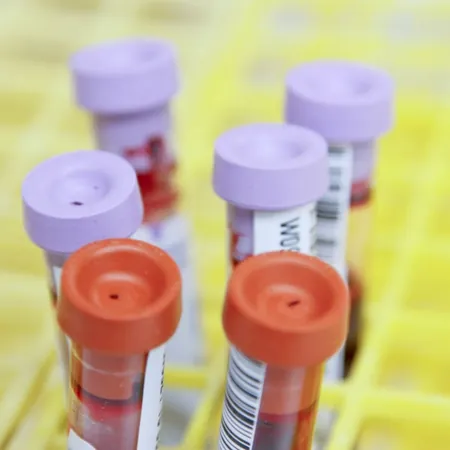
Major Shift in Episiotomy Rates: What It Means for Childbirth Safety
2025-01-17
Author: Nur
A groundbreaking study published in PLOS Medicine reveals that France has experienced a dramatic decline in episiotomy rates from 2010 to 2021, without any corresponding increase in the occurrence of obstetric anal sphincter injuries (OASI) among most women. This finding paves the way for a potential reevaluation of current obstetric practices.
The research, conducted by Raphaele Houlbracq and colleagues from Université Paris Cité, analyzed data drawn from the National Perinatal Surveys conducted in 2010, 2016, and 2021, which encompassed nearly 30,000 women who delivered vaginally. The results show a notable decline in episiotomy prevalence—from 25.8% in 2010 to a mere 8.3% in 2021—an impressive decrease of 67.8%. This reduction was consistent across various demographic groups, with the most significant declines seen among nulliparous women and those undergoing forceps deliveries.
Interestingly, the overall increase in the prevalence of OASI from 0.7% in 2010 to 1.0% in 2021 was not statistically significant, indicating that while the rates of episiotomy have plummeted, the safety of vaginal deliveries has not been compromised for most women. The only exception noted was among nulliparous women who experienced spatula-assisted deliveries, where a significant rise in OASI was recorded.
These findings prompt a critical discussion in the medical community about the longstanding practice of performing prophylactic episiotomies, especially in cases involving instrument-assisted deliveries. The authors advocate for a shift toward more restrictive episiotomy policies, especially for first-time mothers, suggesting that the need for such interventions may be overestimated.
This research challenges traditional obstetric practices and signals a necessary evolution in childbirth protocols. The data may contribute to shaping new guidelines that prioritize women's safety and comfort during labor, reducing unnecessary surgical interventions.
As the conversation around childbirth safety continues to evolve, the implications of this study highlight the importance of ongoing research and reevaluation of birth practices across the globe. Expecting mothers and healthcare providers alike must stay informed about these crucial developments to ensure the best possible outcomes during labor and delivery.



 Brasil (PT)
Brasil (PT)
 Canada (EN)
Canada (EN)
 Chile (ES)
Chile (ES)
 Česko (CS)
Česko (CS)
 대한민국 (KO)
대한민국 (KO)
 España (ES)
España (ES)
 France (FR)
France (FR)
 Hong Kong (EN)
Hong Kong (EN)
 Italia (IT)
Italia (IT)
 日本 (JA)
日本 (JA)
 Magyarország (HU)
Magyarország (HU)
 Norge (NO)
Norge (NO)
 Polska (PL)
Polska (PL)
 Schweiz (DE)
Schweiz (DE)
 Singapore (EN)
Singapore (EN)
 Sverige (SV)
Sverige (SV)
 Suomi (FI)
Suomi (FI)
 Türkiye (TR)
Türkiye (TR)
 الإمارات العربية المتحدة (AR)
الإمارات العربية المتحدة (AR)